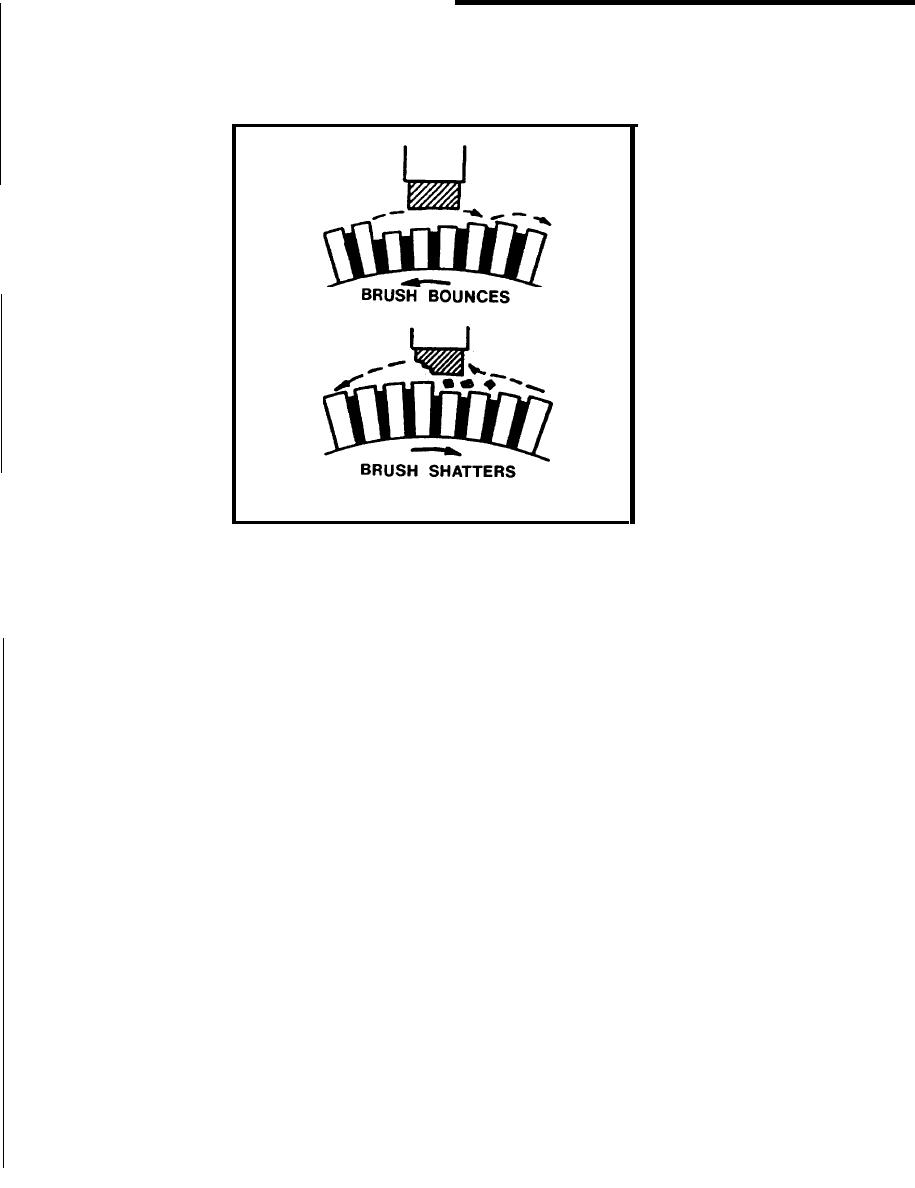

Custom Search
|
|

|
||
 TM 5-683/NAVFAC MO-116/AFJMAN 32-1083
Figure 4-15. Brush "Chatter" Action.
(i) After conditioning a commutator, ensure
(e) Check film on commutator for even and
that it is clean of traces of copper, carbon, or other
uniform color (fig 4-17). The color should be be-
dust.
tween light to dark brown. Clean the commutator as
frequently as required to maintain the proper color.
4-4. Motor operating considerations.
(f) Copper pickup from the commutator sur-
face, indicated when copper fragments become em-
Often problems that cause motor breakdown and
premature failure can be traced to inadequate con-
bedded in the brush faces, constitutes a danger sig-
nal and, unless corrected, becomes progressively
sideration of operation and application of the motor.
To enhance motor operation and improve longevity
worse. The condition can be corrected by providing
consider application, type of motor, horsepower,
proper bar-edge bevelling, sanding the brush faces,
speed, voltage rating and environmental conditions
and thoroughly blowing out the motor after all other
work has been completed.
(table 4-1). The following paragraphs reiterate the
major causes of motor failures.
(g) Check the commutator concentricity with
a. Dirt. Dirt can: plug ventilating spaces, inter-
a dial gauge (fig 4-18). A dial reading of .001 inch on
fering with proper cooling; glaze the faces of com-
high speed machines to several thousandths of an
mutator brushes, resulting in harmfiul sparking;
inch on low speed machines can be considered nor-
blanket windings, interfering with heat radiation
mal. When evidence indicates that the commutator
is out of round or eccentric (fig 4-19), it can be
and causing dangerous temperature rises; build
into a hazard of shorting or grounding, if metallic
restored by grinding" with a grinding rig. While
particles are present and, cause complete motor
grinding, vacuum frequently to prevent copper and
stone grindings from getting into the windings.
breakdown.
Grinding should be performed only by experienced
b. Dust. In open-type motors, use every possible
personnel when the proper tools are available.
means of keeping out dust. Under no condition
should dust be allowed to come in contact with the
(h) After grinding the commutator, the mica
insulation separating the copper segments must be
bearings. Keep the oil-fill caps closed at all times;
undercut (fig 4-20). Bevel the edges of the bar and
maintain the dust seals and gaskets in good condi-
clean the commutator slots. Bevelling eliminates
tion and replace them when worn. Keep plenty of
the sharp edge under the brush at the entering side.
clean rags available for wiping off the motor hous-
Again, follow the manufacturer's instructions in
ings, cleaning commutators and removing dust from
this repair function. Do not attempt this operation
wound sections. Vacuum loose dirt within the motor.
unless proper tools, instruments, and qualified per-
If vacuum cleaning is not effective, blow out the
sonnel are available.
windings with dry compressed air at a pressure not
4-20
|
 |
|
 |
||